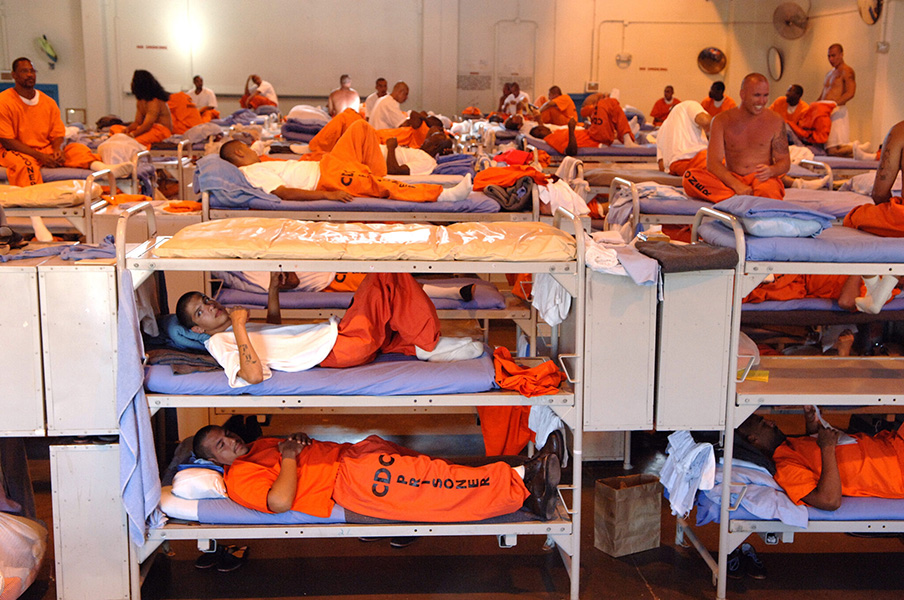Black Opinions
America’s Continued Love Affair With Mass Incarceration
“A concerning surge in jail populations.”
#MassIncarceration #JusticeSystem #IncarcerationTrends #CriminalJustice #IncarcerationEffects #PrisonData

By Stacy M. Brown
Senior National Correspondent
@StacyBrownMedia
NNPA Newswire
Preliminary data released by the Bureau of Justice Statistics (BJS) revealed a notable increase in the number of individuals held in local jails nationwide. As of midyear 2022, the incarcerated population stood at 663,100, marking a 4 percent surge compared to the previous year’s 636,100. This surge is part of a more significant trend that has seen jail admissions rise by 6.6 percent from July 2021 to June 2022, totaling 7.3 million entries. However, the figure is still 37 percent lower than ten years prior, when admissions peaked at 11.6 million.
According to the new data, of the incarcerated population in mid-2022, 14 percent were female, representing an increase over the previous year. The female population experienced a growth of 9 percent, surpassing the 3 percent growth seen in the male population during the same period.
Among those in custody, approximately 30 percent (197,000) were convicted or awaiting sentencing, while the remaining 70 percent (466,100) were not convicted, pending court action, or held for other reasons. This distribution mirrors the proportions observed in 2021.
The numbers saw a 2 percent increase for state and federal prisons from yearend 2021 to yearend 2022, with the population rising from 1,205,100 to 1,230,100. Notably, 35 states and the federal prison system saw an uptick in the number of individuals sentenced to more than one year.
Most prisoners, approximately 96 percent in 2021 and 2022, had sentences of over a year. The demographic distribution remained consistent over the two years, with 32 percent being Black, 31 percent white, 23 percent Hispanic, 10 percent multiracial or of another race, 2 percent American Indian or Alaska Native, and 1 percent Asian, Native Hawaiian, or Other Pacific Islander.
BJS Principal Deputy Director Kevin M. Scott, Ph.D., emphasized the significance of releasing preliminary data, stating in a news release that, “BJS is publishing advanced estimates of key statistics on this topic to provide our stakeholders with timely data as quickly as possible.”
In response to the report, the Jobs Opportunity Task Force (JOTF), a nonprofit advocating for improved skills, jobs, and incomes, drew attention to the wide-reaching effects of incarceration. They revealed that approximately 113 million adults in the U.S., or roughly 45 percent, have a family member with a history of imprisonment, and 79 million individuals possess a criminal record. JOTF officials pointed out that the post-pandemic era has witnessed a resurgence in incarceration rates, attributing the prior decline to COVID-19 responses rather than systemic changes.
Highlighting concerns specific to Maryland, JOTF warned that the state already incarcerates more individuals per capita than Canada, France, the U.K., and China. They cautioned that should Maryland continue this trajectory, it could face economic repercussions, including high unemployment rates among returning citizens, potentially leading to increased reliance on government assistance, diminished tax revenues, and elevated recidivism rates.
JOTF officials concluded by stressing the urgency of addressing mass incarceration, not only for the well-being of affected individuals and their families but also for the broader economic stability of the nation.
“Maryland must continue to dismantle barriers to employment by increasing access to expungement, limiting the use or consideration of prior criminal history when considering an application for an occupational license, and reducing or eliminating the fines and fees that contribute to keeping justice-involved individuals in poverty even if they are able to secure entry-level employment,” JOTF officials wrote.














